IN PROFILE
10 Apr 2024
Amelia Lever-Davidson – Lighting Designer
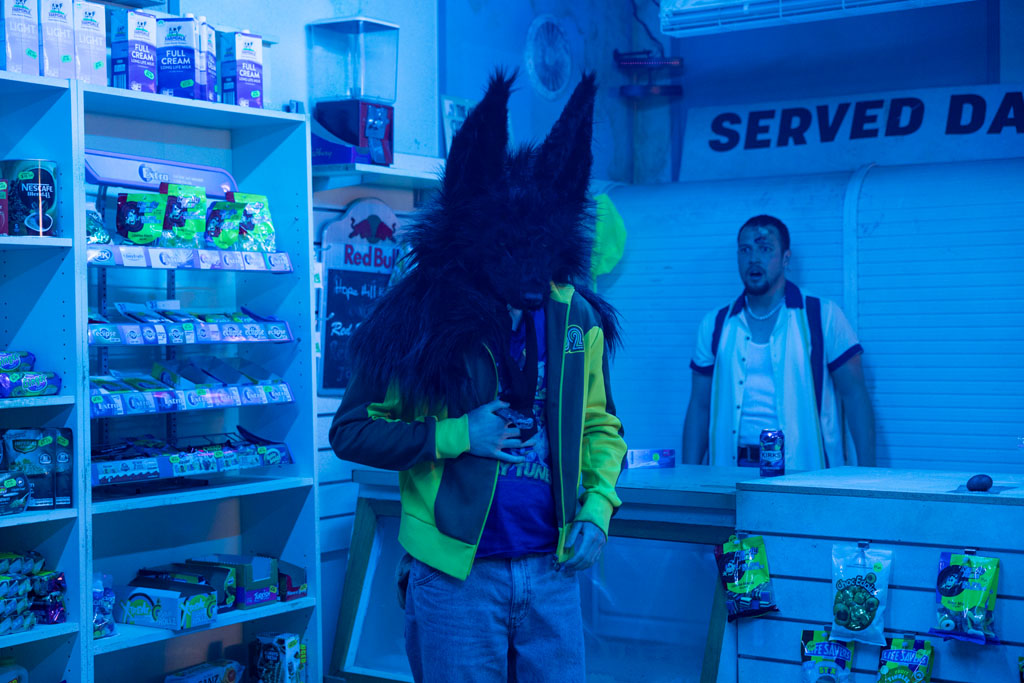
Subscribe to CX E-News
Like most theatre professionals, Amelia Lever-Davidsons interest began in her high school drama department. As a teen she tried her hand at various roles – pulling curtains, handling props, wheeling set pieces on stage. At the time Shane Jacobson – now best known as an actor and comedian – ran Premiere Lighting, a company responsible for installing the lighting for the school’s shows. Amelia remembers him generously teaching her about lighting and how at the end of one of his technical spiels he’d say, “Oh wow you’re still listening.”
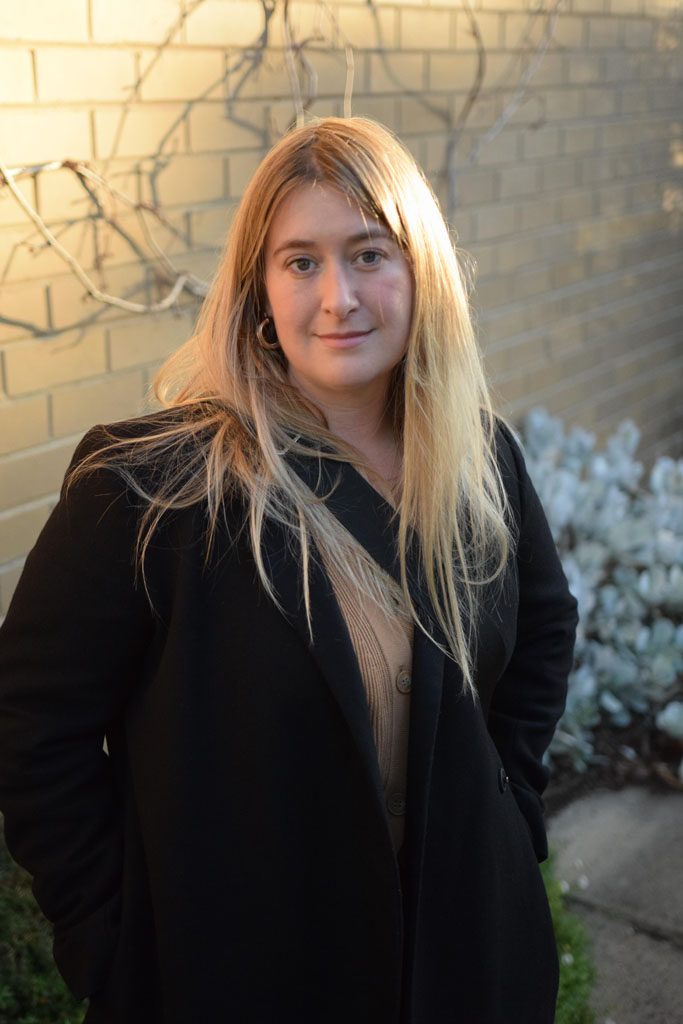
After high school, she studied a live production course at WAAPA and once graduated, she started working on the factory floor at Bytecraft (now PRG). Testing and tagging cables for months on end is not the dream of most young thespians, but soon enough she landed a job as a lighting technician at the Nine Network.
“Channel Nine gave me a really intensive learning environment working in film and television surrounded by people who were pushing me and encouraging me. It was an amazing opportunity to work for a major company at a time when it was making large scale shows.”
Amelia says TV is a great training ground for how to light to compliment a face. “Looking at a face as architecture and how to support that, keep it separate from the background, but also make the set look fantastic. That’s what theatre design is too. How to light a figure in space, support it and separate it from the set.”
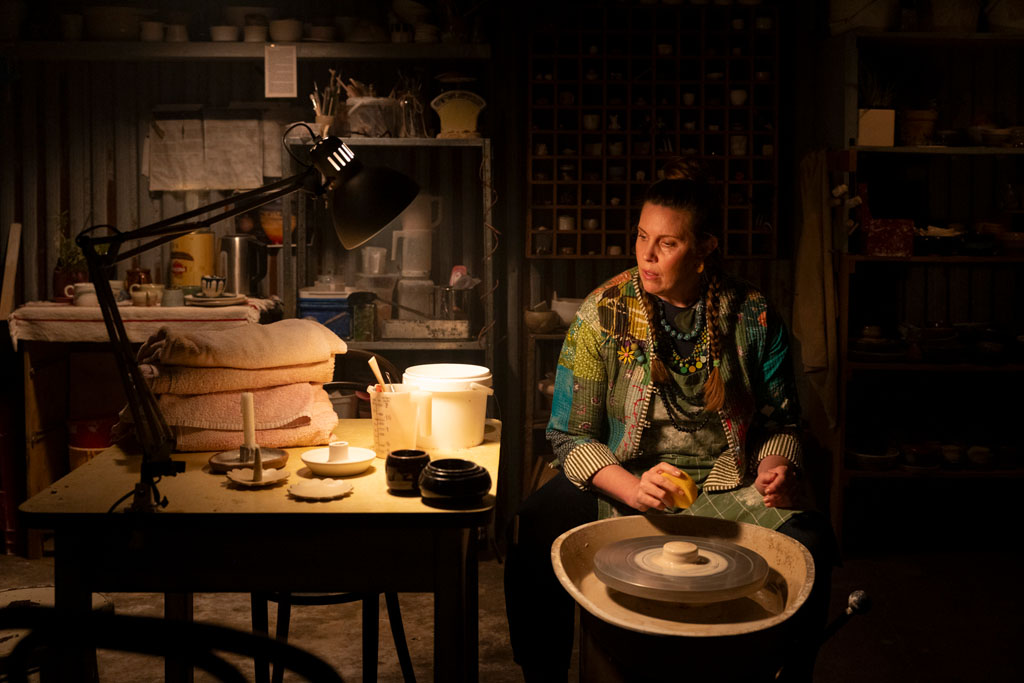
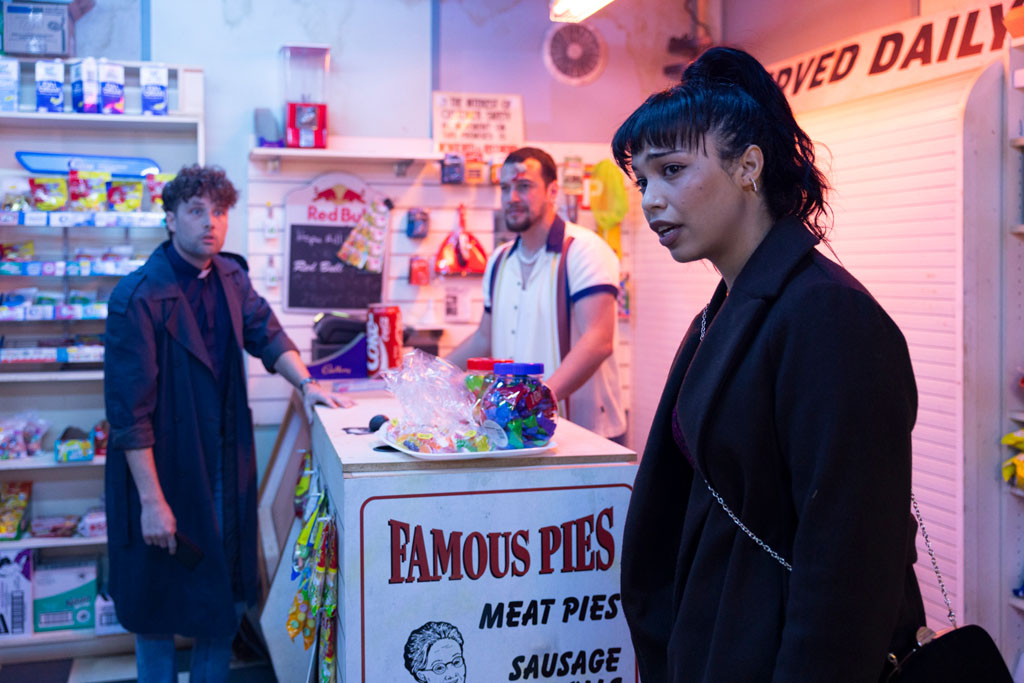
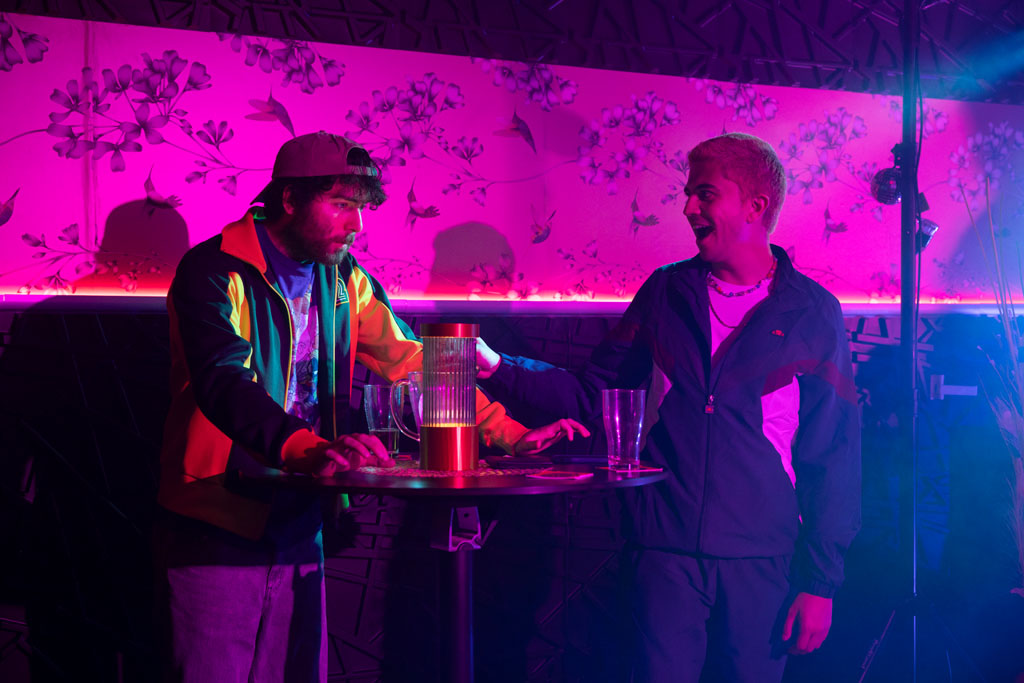
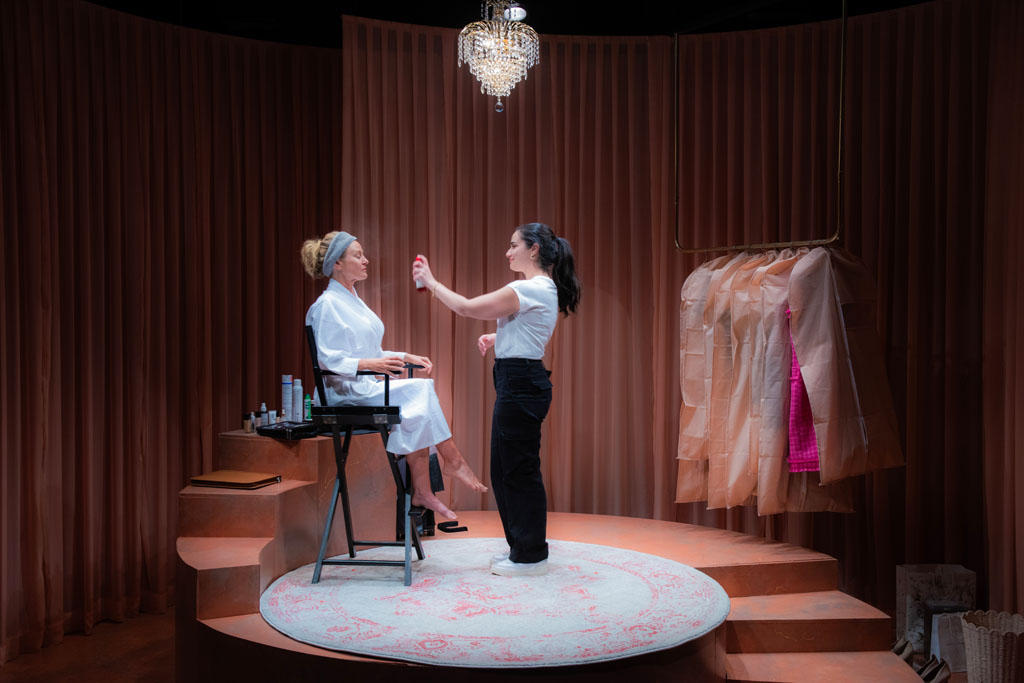
– photo: Jodie Hutchinson
Of course, there are differences between lighting for screen and a live audience. “There’s not really washes in TV. They are just an emergency thing you have on a fader in case someone steps out from behind a desk.” Another key difference is the kinds of colours used. “Colours that I would never use in the theatre, that to the eye look dreadful, when you look at it on screen it looks like magic.”
Eventually after several years Amelia found herself wanting to return to theatre. “TV began to feel like repertory theatre. You’re bumping in and out the same shows over and over, making tiny changes, but really re-lighting someone else’s design.”
She started working on small shows at La Mama and out the back of pubs, before eventually leaving the security of full-time work to do a Post Graduate Diploma in Performance Creation at the Victorian College of the Arts. “Because I had the technical experience at Nine, the course was really about making connections, building relationships and collaborating. It put me in a course with the people that I went on to work with after uni.”
After graduating Amelia started designing for independent theatre. Ten years on her designs are regularly showing on mainstages.
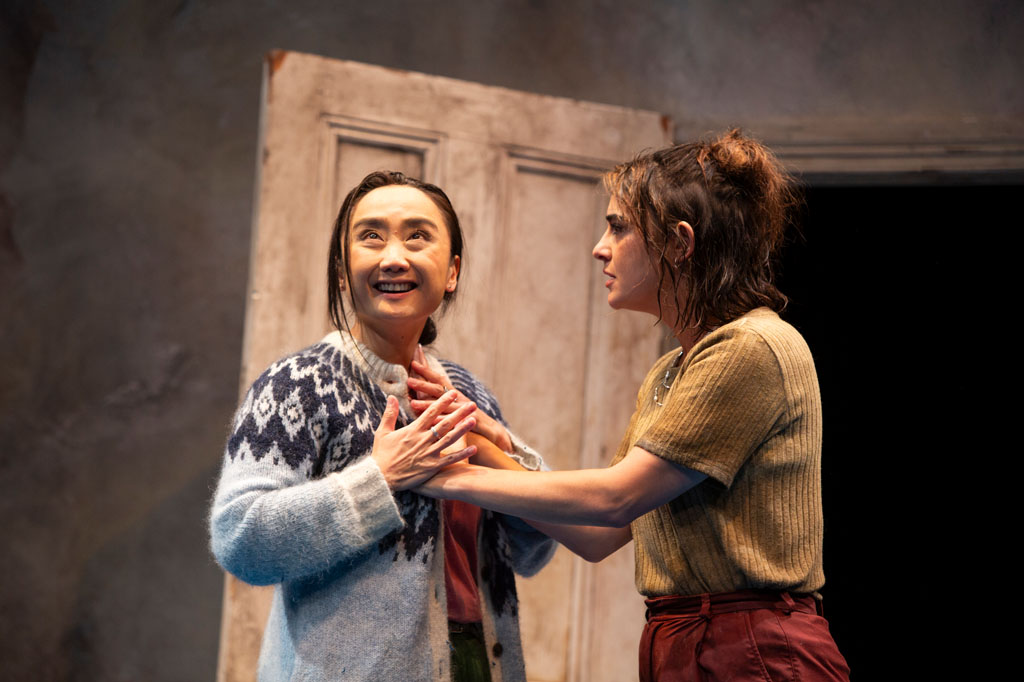
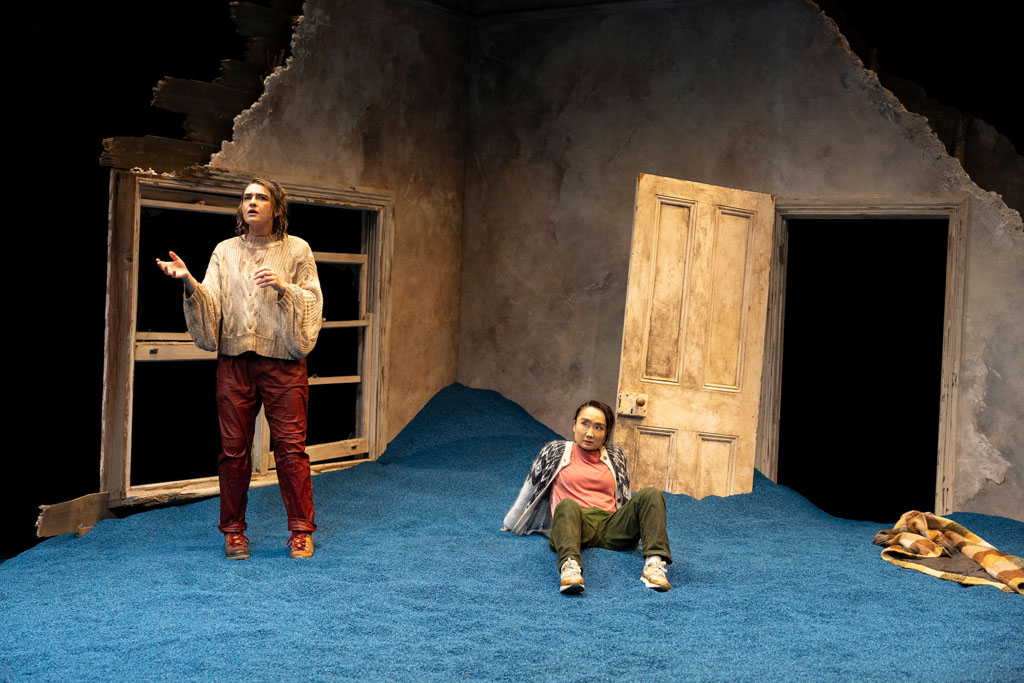
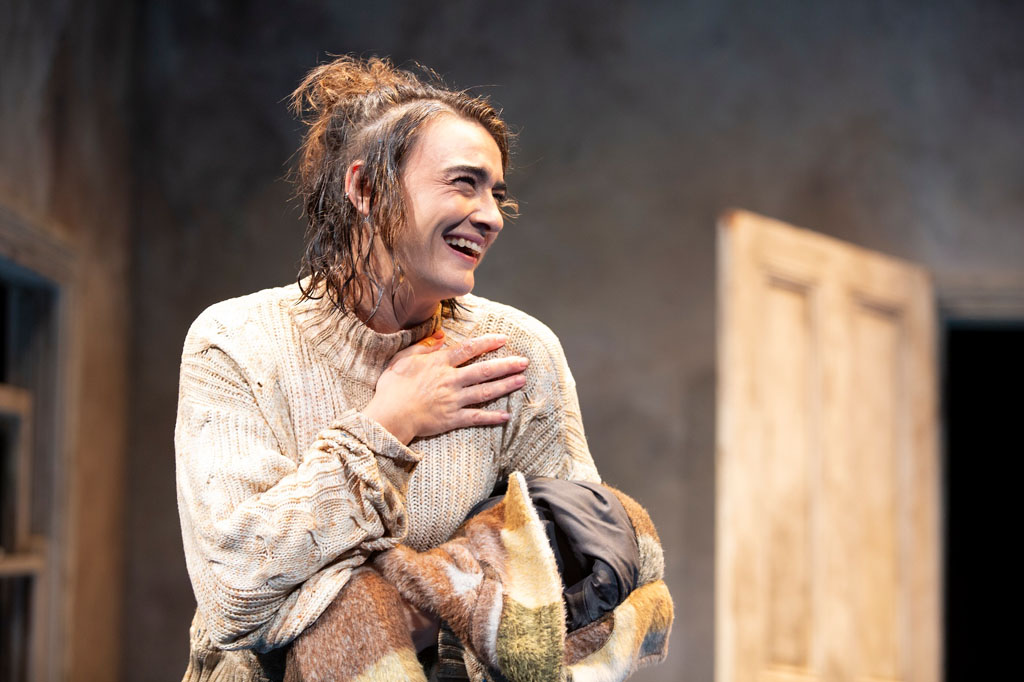
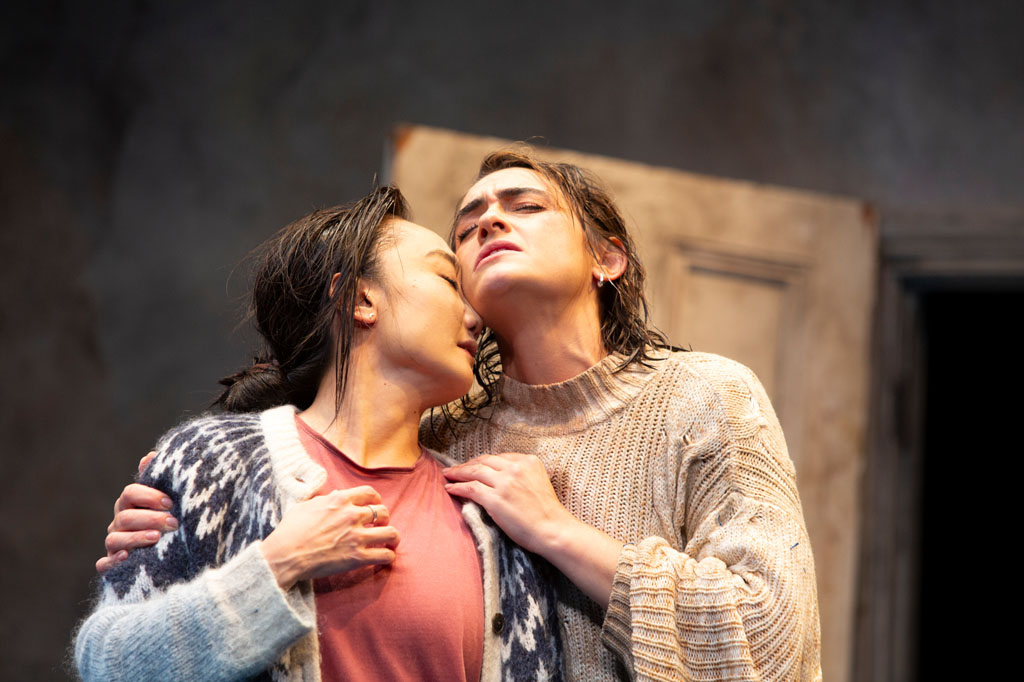
At the time of speaking Amelia has two lighting designs currently showing in Melbourne. Meet Me at Dawn, (Melbourne Theatre Company) at the Fairfax Studio, and Monument, which is running a return season at Red Stitch Actors Theatre. The former’s set has a cobalt blue, pebbled rubber floor. For the latter, the set is overwhelmingly blush pink. While the two shows look distinctly different, Amelia maintains that the difference in the lighting colours is minimal. “At the best of times I am slightly resistant towards colour. When you’re first designing you’re all drawn to very saturated colours. We all go through the phase of using mauve and pink back light. It’s something I gradually begun to move away from when I wanted to make light feel the way it does in reality, which is often not hyper- saturated.”
There is one gel used in Monument that she describes as a ‘nod’ towards the pink, and an extra layer of LED top light was implemented to cover the set of Meet Me at Dawn for when the design needed to build the richness of floor colour into a very deep blue, but says ultimately the sets were doing the work. “When something is so colourful you want to lean in to support it a little, but keep everything neutral enough to compliment the actor’s faces.”
“You get used to a certain kind of tool kit and a certain kind of palette. Once you understand how that applies in design you can be resistant to moving away from it because you know what those colours will do and how they will best support the picture.”
More so than any colour decisions these designs were focussed on geometry. The action in Monument happens around a circular platform and spiral stairs at centre stage. The actors wind up and down the stairs as they wind one another up. Amelia’s design was focussed on emphasising that circular shape and visually echoing it.
Geometry also applies when referring to the shape of a story. “The framework for Meet Me at Dawn is the clock, of time running out. It begins at the start of the day and ends in the abyss, the characters’ last moments with each other. I wanted to replicate that more than any saturation.”
One key goal of all her designs is to attempt to light within the stage picture. “The first thing everyone learns about lighting design is the McCandless theory of front light as the main key source. I like to reorient the key to try and light from within the picture, rather that outside of it. I love three quarter back light, I love high sides, I love side light. Pushes of light that feels like the way light falls naturally in the world.”
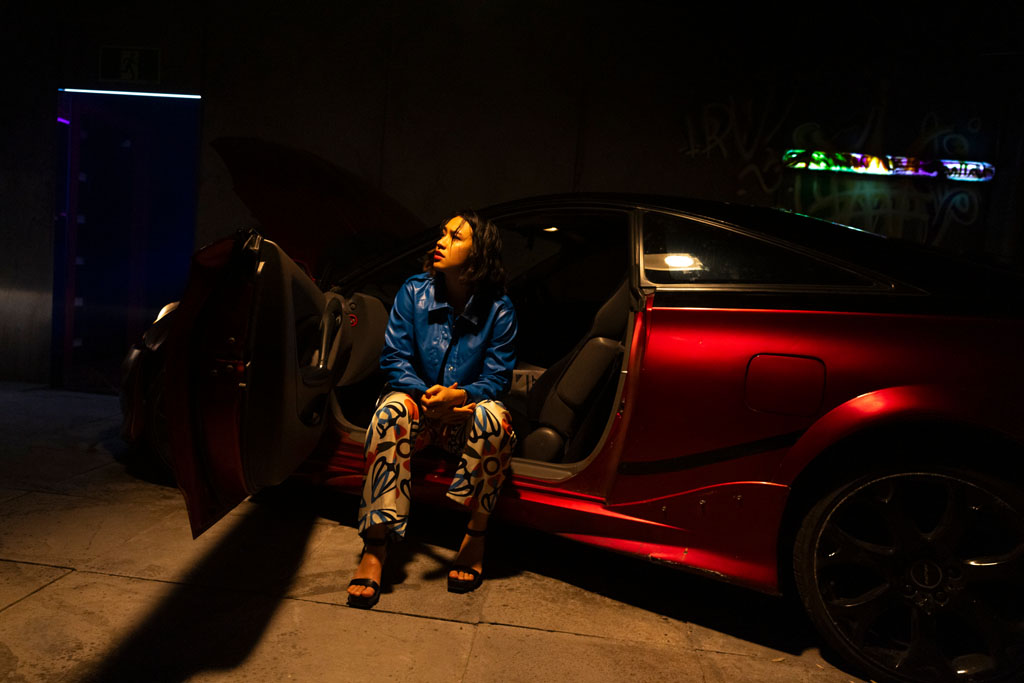
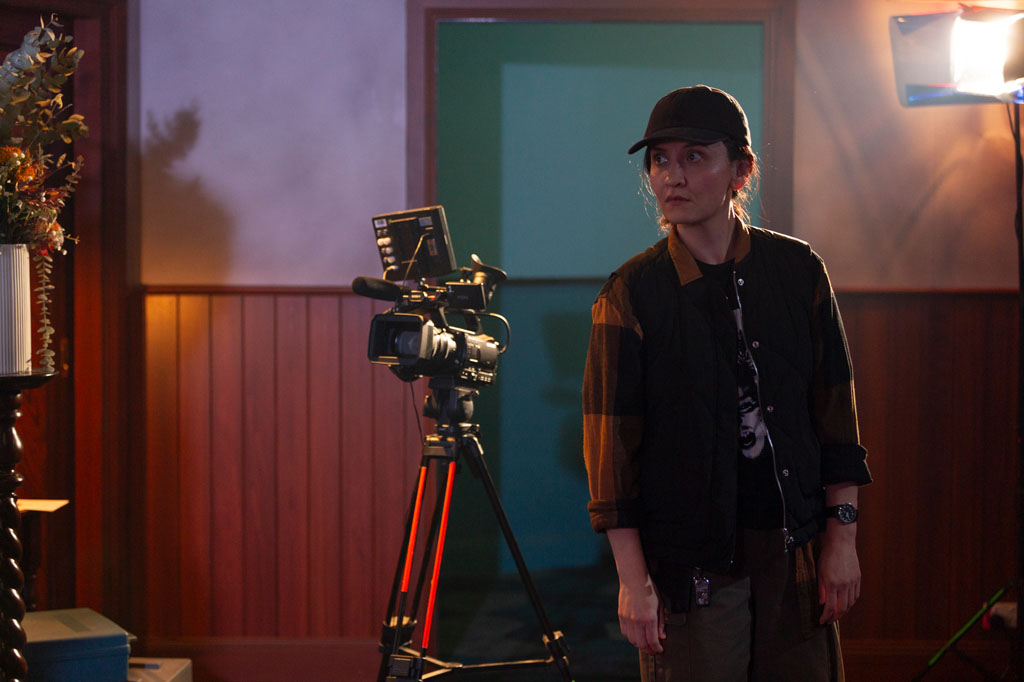
Making the transition from smaller independent productions in non-traditional venues to full-blown productions in major theatres presented its own challenges. “The biggest learning curve is learning how to light for proscenium arch theatres, which you don’t really get to attempt until you’re actually working in those venues for the first time.
When you’re starting out in design most of the theatres are black boxes or studio spaces, where the lighting options are often creatively limitless. Figuring out how to light around a proscenium can be incredibly daunting on your first attempt, especially when that theatre seats over 800 people.
It was the 2023 Melbourne Theatre Company production of Theresa Rebeck’s Bernhardt/Hamlet that offered Amelia her biggest challenge “That was the biggest step up for me – a proscenium arch show that had multitudes of flown things, painted cloths coming in and out, and set pieces trucking on and off.”
Designers Amelia admires include Australia’s Paul Jackson and Nick Schlieper and, abroad, Paule Constable and Jon Clark. Amelia describes all four designers’ work as “austere, precise and incisive lighting.” Amelia undertook a mentorship with Paule in the UK and hopes one day to be brave enough to design as dark as Paule does. “I remember sitting in the rehearsals of Angels in America and thinking “this is the National Theatre and this is so dark!” Paule’s designs sit in this really interesting place visually, absolutely teetering on the edge of darkness. It’s amazing to see designs like that which are crafted like intimate studio piece even though it’s in Lyttelton Theatre.”
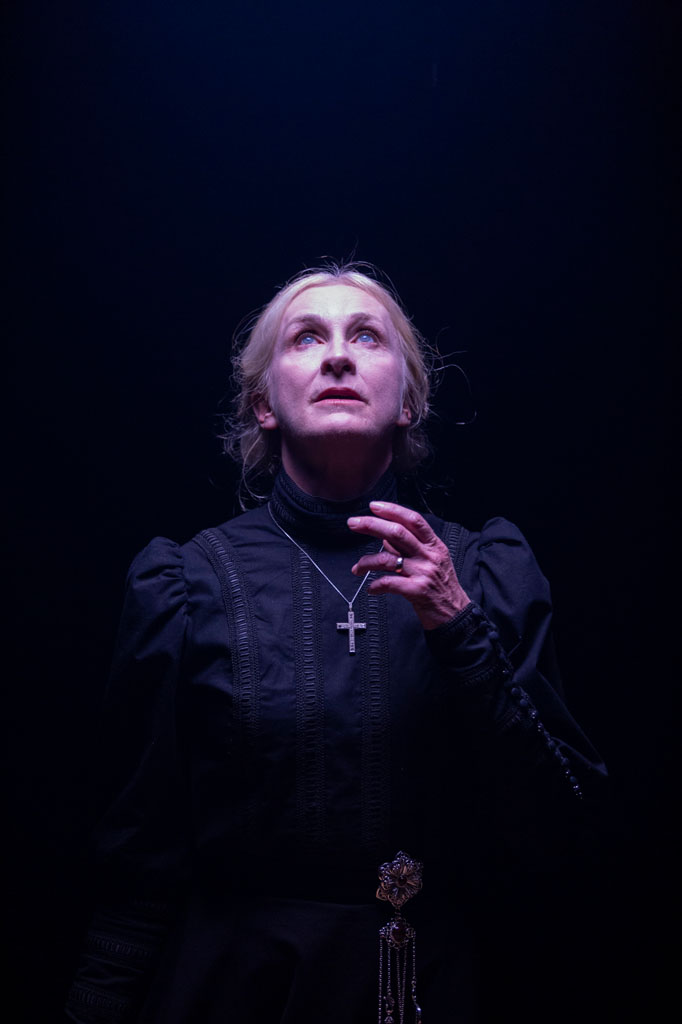
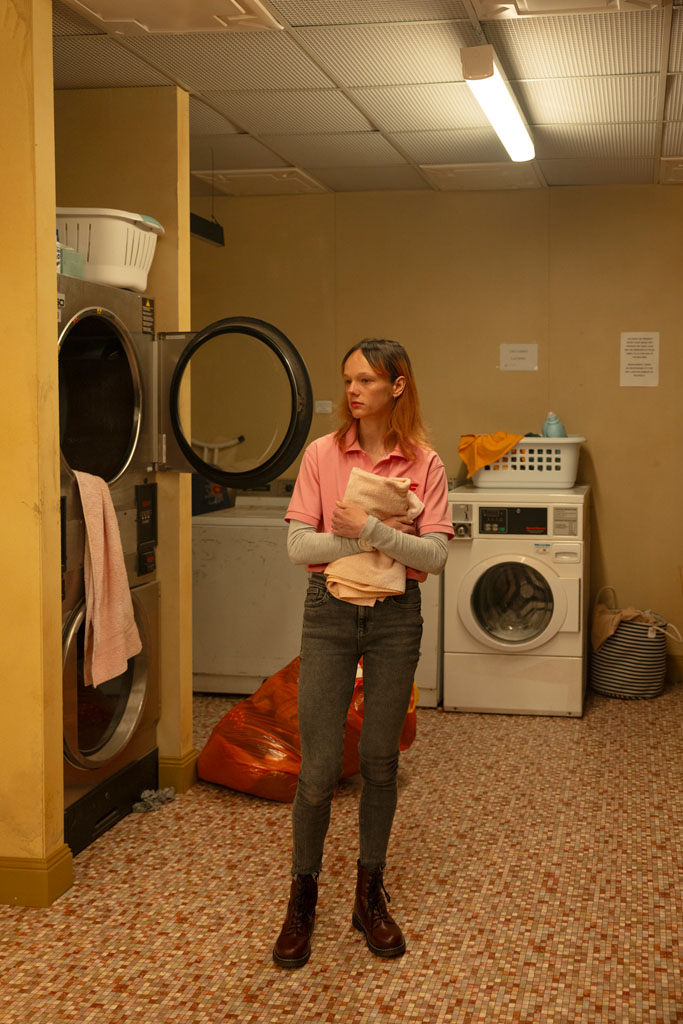
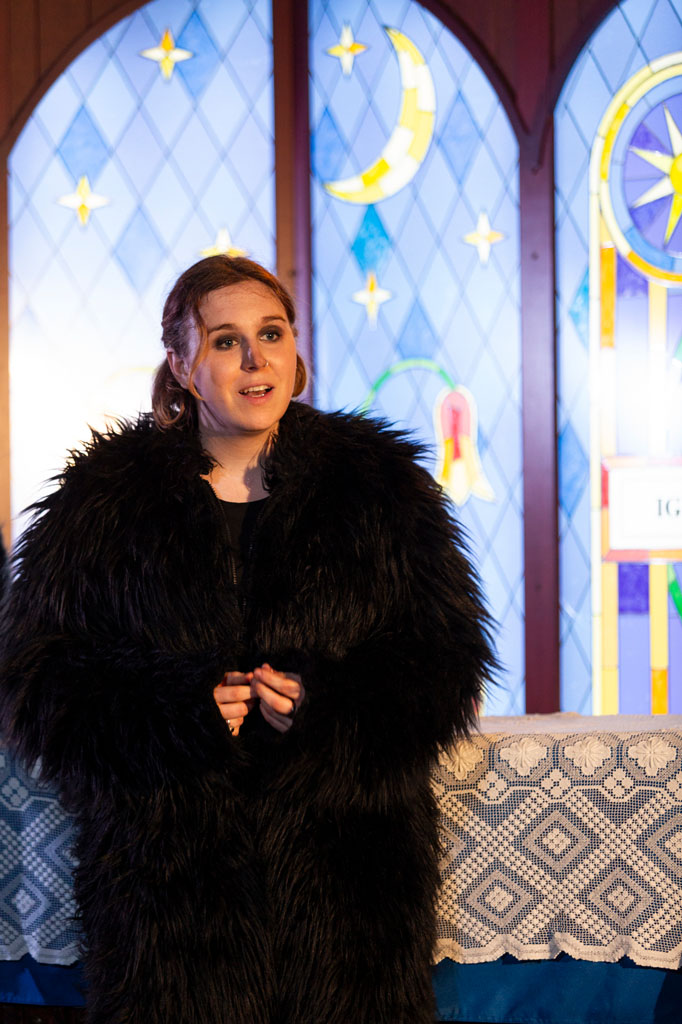
As for her career highlights so far, two immersive shows Amelia designed at the Malthouse – Hour of the Wolf and Because the Night – allowed her to apply her experiences in theatre, television, film and installation.
“Often when you’re stepping into a venue you are handed the tech specs and it’s like ‘here are the lights that are always in the venue’, and that is the gear that you inevitably use. But for the immersive shows we were able to create bespoke solutions for all of the spaces. For Hour of the Wolf, the Malthouse team built hundreds of LED fluros from scratch, in a multitude of styles, using kilometres of LED tape. After what we learnt from Because The Night, we knew that most fixtures need to be custom built, or retrofitted so it could be controllable within the degree that we needed. It was incredibly satisfying being so specific with the build of each fitting.”
The proximity to the audience meant she could be bolder with her choices. “I could be darker and create something where they were really invited into the space as opposed to a more presentational style of theatre. I found that very satisfying as it felt like finally all my skills had come to this perfect alchemy.”
Amelia Lever-Davidson has upcoming lighting designs at MTC, The Almighty Sometimes, and the Malthouse, MacBeth (An Undoing).
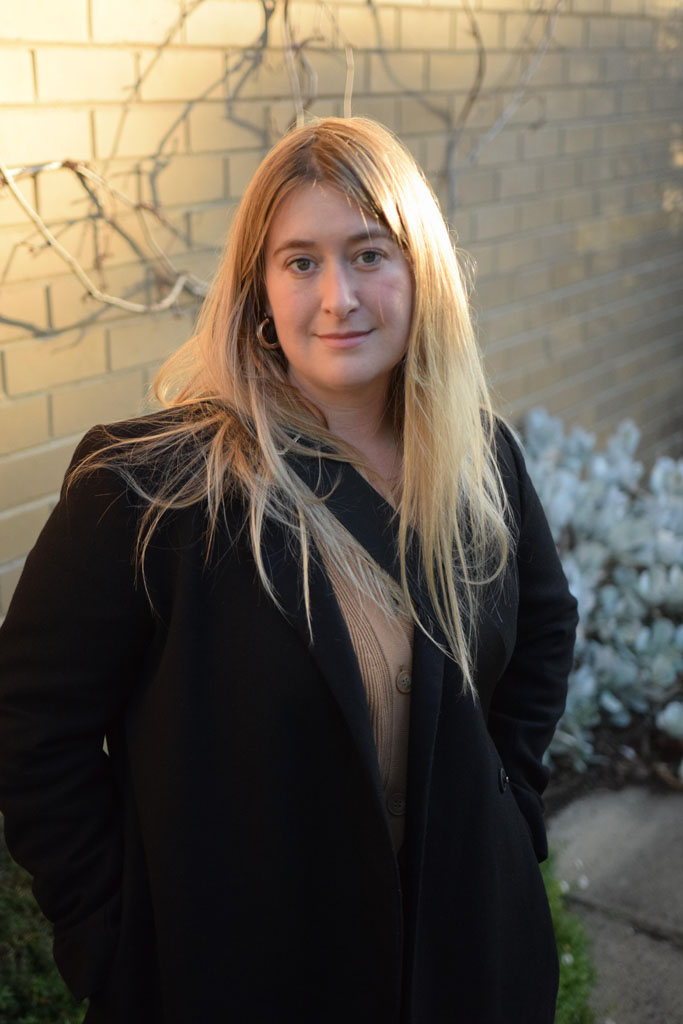
Amelia Lever-Davidson is an award- winning lighting designer for theatre, dance, live art, installation and events. She is a graduate of the Victorian College of the Arts, The Western Australian Academy of the Performing arts and RMIT. She has designed lighting for Sydney Theatre Company, The Melbourne Theatre Company, Belvoir St Theatre, Malthouse Theatre, Chunky Move, Red Stitch, Chamber Made, Elbow Room, Belarus Free Theatre, Deep Soulful Sweats, The Hayloft Project, MKA, CIRCA, DARK MOFO, RISING, Melbourne International Comedy Festival and many others. Amelia’s work has been recognised with Green Room Awards for Diaspora, Contest, Looking Glass and her 2015 body of work. Amelia is an Australia Council ArtStart and JUMP Mentorship recipient, Ian Potter Cultural Trust recipient, and a past participant in the Malthouse Besen Family Artist Program and the Melbourne Theatre Company’s Inaugural Women in Theatre Program. Amelia has also worked as a lighting director for Channel Nine, Channel Ten, and the ABC.
Subscribe
Published monthly since 1991, our famous AV industry magazine is free for download or pay for print. Subscribers also receive CX News, our free weekly email with the latest industry news and jobs.




